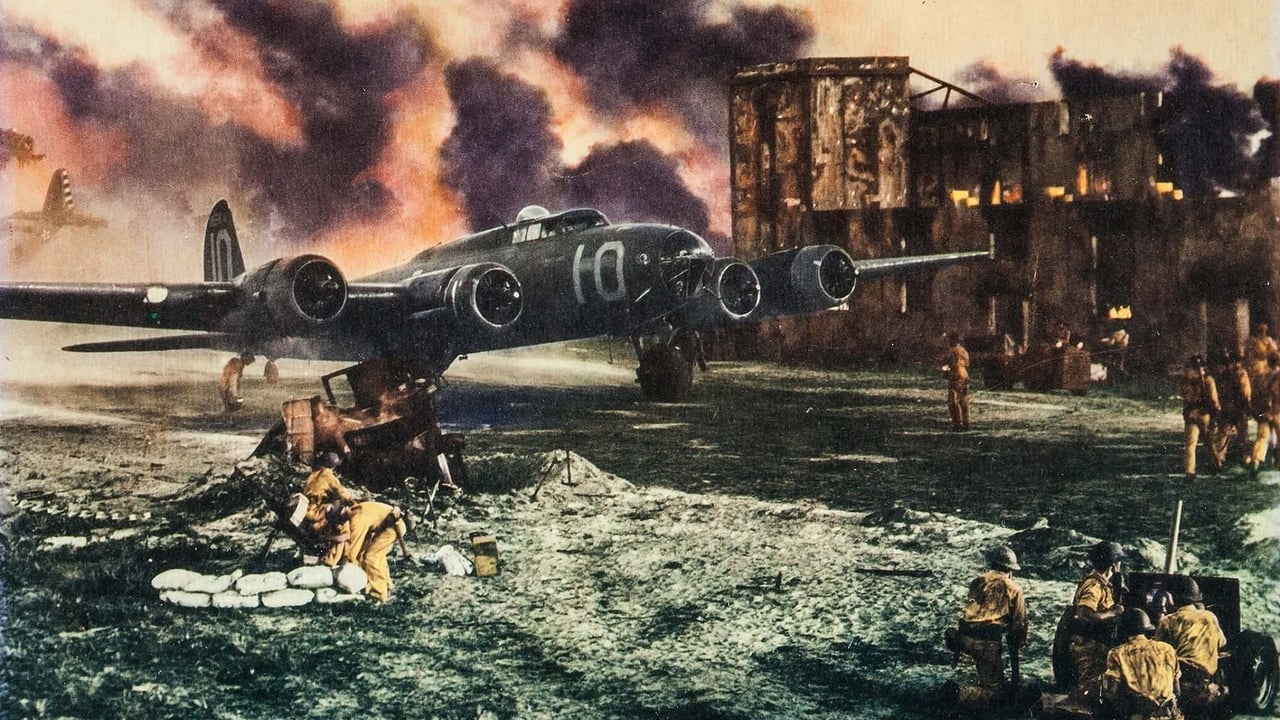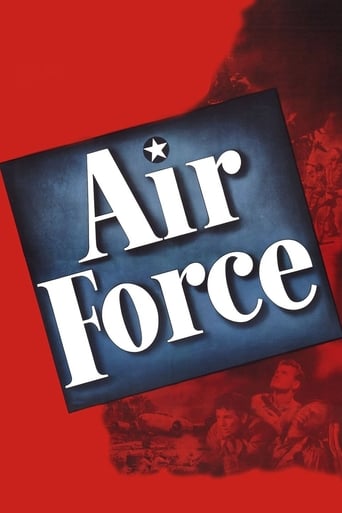

Truly Dreadful Film
... View MoreTied for the best movie I have ever seen
... View MoreSelf-important, over-dramatic, uninspired.
... View MoreAbsolutely brilliant
... View MoreAs a child, TV I watched "Air Force" and other war films some consider WW II "propaganda" on TV. As a young man, after a night of carousing, I'd come stumbling home and, if a channel were showing these types of films, I'd watch them on the Late, Late Show. Now, I watch these films for the excellent acting, action, and for their historical content significance as "propaganda" films during the dark part of WWII for the US and its allies. When it seemed as if Japan and Germany were conquering the world. And I could also enjoy the action and danger vicariously.Don't kid yourself that Hollywood no longer makes "propaganda" films. They are making them now more than ever. The films are just a different type of "propaganda".
... View MoreLots of small talks, smiles, no ranking comrade crap, bad acting and most of all, horrible laughable childish screenplay with annoying unnecessary dialog between and among these air force guys. this is the film shot in 1942 or 1943, a very unrealistic WWII propaganda film, but I do not share the least blind and/or patriotic praises that most of the viewer contributed in IMDb, yet I completely agreed with those few reviewers who gave the lowest and the least ratings on this lousy film. There's nothing worth praising for this childish film, it's a big laugh if compares it to those real serious WWII films. I kept shaking my head during watching this pathetic film. An Oscar? What a joke! It only made the Oscar itself like a joke and completely lost its authenticity of awarding the best films for any category. What a lousy film, one of the worst WWII B/W war films.
... View MoreI imagine "Air Force" will more likely be enjoyed by World War II and/or aviation enthusiasts than it will be by casual moviegoers. There's a lot of shop talk in the film about bombers, and it's almost as much about the impressive power of warplanes specifically as it is the United States Air Force in general. A sort of day in the life of Air Force soldiers, it chronicles the adventures of a bomber crew who show up in Hawaii just after it has been bombed by the Japanese and then are sent on to various missions by military brass. It's a propaganda film like so many of the films that came out during WWII, but it's an uncharacteristically dark one and its predominant mood is one of weariness and exhaustion, which makes sense given its year of release (1943).In addition to its nomination for Best Original Screenplay, "Air Force" won the 1943 Oscar for Film Editing, probably for a couple of impressive dog fights that had to have influenced George Lucas when filming the Tie Fighter vs. Millennium Falcon space battle in "Star Wars." It also was nominated for its black and white aerial cinematography and its special effects.I mostly found "Air Force" to be unengaging, but I did appreciate its subdued tone and its depiction of the men serving in WWII as strung out, sleep deprived and riddled with personal anxiety. It's a nice contrast to the rah-rah patriotism of so many other war films of the time period.Grade: B
... View MoreLuckily, I was able to view this wonderful and inspiring movie last night. And I was unable to bring myself to change channels to watch another program. The actors were very natural in both combat and 'normal' situations. Of course, the special effects were dated but fine considering the movie's production mid-WWII time frame. Maybe the movie industry should consider updating and reissuing it or a new version? The movie reminded me of how so very much all Americans owe to our WWII veterans as well as those who were involved in working and supporting the war effort. I hope that the USA never has to go through such a terrible time fighting a national security threat.
... View More